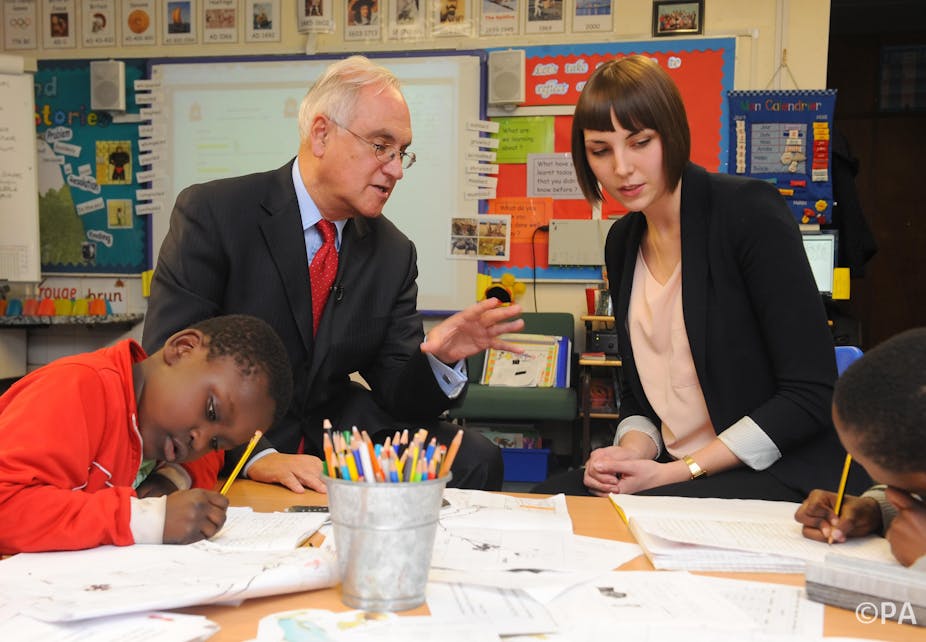Ofsted’s chief inspector Michael Wilshaw is right to claim that his proposals for the future of school inspection set out: “some of the most far-reaching reforms to education inspection in the last quarter of a century”. The biggest of these reforms is that schools classed as “outstanding” or “good” will not have as many regular full inspections – instead they will have more frequent but far shorter visits from Ofsted. And the biggest omission is that not all independent schools are to be inspected in the same way.
Looking back to 25 years ago, schools in England were subject to periodic inspection, not by Ofsted but by Her Majesty’s Inspectorate which also acted in an advisory capacity to the government education department of the day.
On average, primary schools were visited for one day roughly every seven years or so, when a professional dialogue took place with the head and governors. The smaller number of secondary schools would be visited more frequently. But there was no guarantee that any school would necessarily have a full inspection in any given period.
Problems with quality assurance
When Ofsted was created 22 years ago it faced a political imperative: all schools in England had to be inspected in a four-year period. Yet the number of HM Inspectors (HMIs) then in post, following reorganisation, was fewer than 200.
The result was a period of ill-thought out, frenzied activity involving the inadequate training of large numbers of would-be inspectors employed by a multitude of private agencies. Inspection handbook after inspection handbook were compiled which tried to codify inspection practice in a form which relied less on professional judgement and more on compliance with explicit, so-called “objective” criteria.
The whole process was intended to be monitored by an inadequate number of HMIs who could never quality assure the whole process closely enough. That political imperative was met but at a cost – to honest, mutually respectful relationships between inspectors and schools and to the reputation of inspection as a rigorous external form of school evaluation, free from political interference.
Fewer inspections for good schools
Somewhat to my surprise it is to the credit of the current chief inspector and his senior managers that they have recognised that those costs are now too high, especially given that more than 70% of schools are now regarded as “good” or “outstanding”.
The proposals are part of what I have previously described as a cultural shift in Ofsted. The inspectorate is now planning to alter the frequency and pattern of its inspections for “good” and “outstanding” schools, hearkening back to HMI inspection practice pre-1992. The proposed shorter visits are likely to take place every three years, according to Ofsted.
It is also proposing a long-overdue common inspection framework for early years settings on the Early Years Register, maintained schools and academies, further education and skills providers and independent schools that are not part of an association. The vast majority of inspection activity would be led by Ofsted’s own inspectors – rather than outsourced – with an increased number of school and college leaders on brief attachments or longer secondments.
There are very real benefits to the proposed changes. Perhaps most importantly, they should enable many more schools to focus on the further improvement of teaching quality and educational standards, rather than devoting disproportionate amounts of time and anxiety preparing for inspection.
Those schools requiring intervention and advice based on expert classroom observation are more likely to receive it. The new arrangements should also improve Ofsted’s knowledge of local developments and better inform government of what is happening, including the effects of its policies on the education service as a whole.
Private schools left off
My only major reservation relates to Ofsted’s proposal to restrict its remit to non-association independent schools, rather than the whole gamut of private provision. There can be no educational justification whatsoever for treating some independent schools differently from state schools in terms of inspection.
Leading independent schools are quite happy to quote examination data when justifying their privileged position. They should be equally happy to quote comparable Ofsted inspection findings. Ofsted needs to rethink its position and to work “without fear or favour” to develop a common inspection framework which does justice to all schools – state-maintained, academies, free schools and independent ones. The challenge for the whole of the private sector is to accept it – with good grace.
But Wilshaw has been wise not to proceed by introducing routine use of no-notice inspections, as had been mooted.
Once the culture of inspection has changed these should not prove contentious in principle. But fundamental changes of mind-set take time. A culture of mutual respect and frankness between schools and inspectors needs to be in place and it isn’t there as yet. Ofsted should allow time for its other changes to take effect before reconsidering routine no-notice inspections.
Changing the culture of Ofsted and its relationship with schools will not be easy. It will be met with suspicion, even denial, by those within and outside the organisation. But these proposals represent a major opportunity for inspection reform which the teaching profession should welcome.

